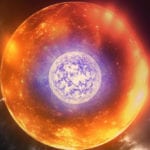 Technology
Technology  Technology
Technology  Movies and TV
Movies and TV 10 Film Shoots That Almost Ended in Disaster
 Politics
Politics The 10 Most Bizarre Presidential Elections in Human History
 Weird Stuff
Weird Stuff 10 Eggs-traordinarily Odd Eggs
 History
History 10 Desperate Last Stands That Ended in Victory
 Animals
Animals Ten Times It Rained Animals (Yes, Animals)
 Mysteries
Mysteries 10 Devastating Missing Child Cases That Remain Unsolved
 Creepy
Creepy 10 Scary Tales from the Middle Ages That’ll Keep You up at Night
 Humans
Humans 10 One-of-a-kind People the World Said Goodbye to in July 2024
 Movies and TV
Movies and TV 10 Holiday Movies Released at Odd Times of the Year
 Technology
Technology Making 10 Common Products from Very Unusual Sources
 Movies and TV
Movies and TV 10 Film Shoots That Almost Ended in Disaster
 Politics
Politics The 10 Most Bizarre Presidential Elections in Human History
Who's Behind Listverse?

Jamie Frater
Head Editor
Jamie founded Listverse due to an insatiable desire to share fascinating, obscure, and bizarre facts. He has been a guest speaker on numerous national radio and television stations and is a five time published author.
More About Us Weird Stuff
Weird Stuff 10 Eggs-traordinarily Odd Eggs
 History
History 10 Desperate Last Stands That Ended in Victory
 Animals
Animals Ten Times It Rained Animals (Yes, Animals)
 Mysteries
Mysteries 10 Devastating Missing Child Cases That Remain Unsolved
 Creepy
Creepy 10 Scary Tales from the Middle Ages That’ll Keep You up at Night
 Humans
Humans 10 One-of-a-kind People the World Said Goodbye to in July 2024
 Movies and TV
Movies and TV 10 Holiday Movies Released at Odd Times of the Year
10 Strange Theoretical Stars
Humans have been fascinated by stars since early history. With modern science, we know much about the stars, including their various types and structures. Knowledge on this topic is still developing, and astrophysicists have proposed a variety of theoretical stars that may exist in our universe. Alongside the theoretical stars are star-like objects, astronomical structures that look and behave like stars but do not have the standard characteristics that we ascribe to stars, mainly the chemical structure and fusion energy source. The objects on this list are at the cutting edge of physical research and have not been directly observed . . . yet.
10 Quark Star
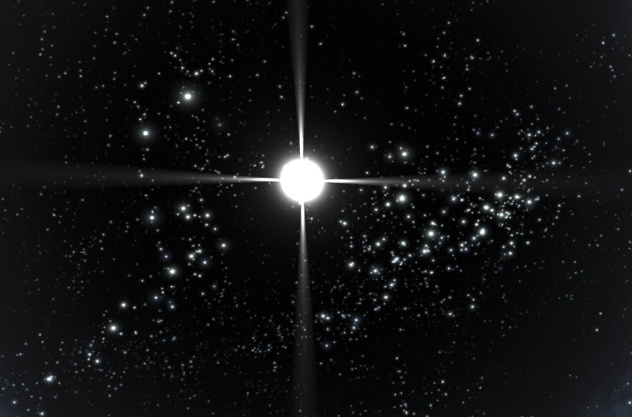
A star at the end of its life can collapse into a black hole, a white dwarf, or a neutron star. If the star is sufficiently dense before it erupts into a supernova, the stellar remnant will form a neutron star. When this happens, the star becomes extremely hot and dense. With so much matter and energy, the star attempts to collapse in on itself and form a singularity, but the fermionic particles in the center (in this case neutrons) obey the Pauli exclusion principle. This means that the neutrons cannot be compressed into the same quantum state, so they push back against the collapsing matter, reaching equilibrium.
For decades, astronomers assumed that a neutron star would stay in equilibrium. But as quantum theory became more developed, astrophysicists proposed a new type of star that would occur when the degenerative pressure of the neutron core failed. This is called a quark star. As the pressure of the star mass increases, the neutrons break up into their constituent up and down quarks, which under intense pressure and energy would be able to exist freely instead of coupling to produce hadrons like protons and neutrons. Termed “strange matter,” this soup of quarks would be incredibly dense, more so than a normal neutron star.
Astrophysicists are still debating over how exactly these stars would form. Some theories state that they occur when the mass of a collapsing star is between the necessary mass to form a black hole or a neutron star. Other researchers have theorized more exotic mechanisms. A leading theory is that quark stars form when dense packets of preexisting strange matter wrapped in weakly interacting massive particles (or WIMPs) collide with a neutron star, seeding the core with strange matter and beginning the transformation. If this occurs, the neutron star would keep a “crust” of neutron star material, effectively making it seem like a neutron star while having a strange matter core. Although no quark stars have been found, many of the neutron stars that have been observed may secretly be quark stars.
9 Electroweak Star
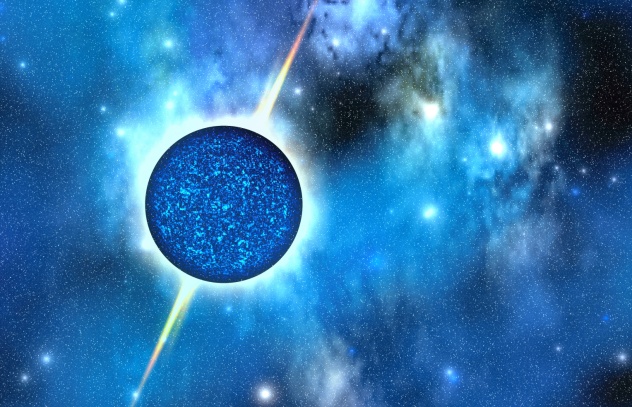
While the quark star would seem to be the last stage of a star’s life before it dies and becomes a black hole, physicists have recently proposed yet another theoretical star that could exist between a quark star and a black hole. Called the electroweak star, this theoretical type would be able to sustain equilibrium due to the complex interactions between the weak nuclear force and the electromagnetic force, collectively known as the electroweak force.
In an electroweak star, the pressure and energy from the mass of the star would push down on the quark star’s core of strange matter. As the energy intensifies, the electromagnetic and weak nuclear forces mix, and no distinction remains between the two forces. With this energy level, the quarks in the core dissolve into leptons, such as electrons and neutrinos. Most of the strange matter would turn into neutrinos, and the released energy would provide enough outward force to stop the stellar collapse.
Researchers are interested in finding an electroweak star because the characteristics of the core would not be unlike the early universe one-billionth of a second after the big bang. At that point in our universe’s history, there was no distinction between weak nuclear force and electromagnetic force. It has proven difficult to formulate theories about that time, so finding an electroweak star would give a huge boost to cosmological research.
An electroweak star would also be one of the densest objects in the universe. The core of an electroweak star would be the size of an apple but contain the mass of two Earths, making it denser than any previously observed star.
8 Thorne-Zytkow Object
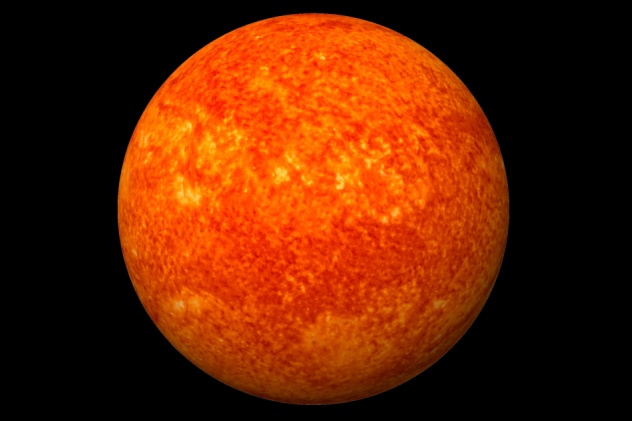
In 1977, Kip Thorne and Anna Zytkow published a paper detailing a new type of star called a Thorne-Zytkow Object (TZO). A TZO is a hybrid star formed by the collision between a red supergiant and a small, dense neutron star. Since a red supergiant is an extremely large star, the neutron star would take hundreds of years to just breach its inner atmosphere. As it continues to burrow into the star, the orbital center (called the barycenter) of the two stars will move toward the center of the supergiant. Eventually, the two stars will merge, causing a large supernova and eventually a black hole.
When observed, the TZO would initially look like a typical red supergiant. However, the TZO would have a variety of unusual properties for a red supergiant. Not only would its chemical composition be slightly different, but the burrowing neutron star would cause radio wave bursts from inside. Finding a TZO is extremely difficult because of how subtly it differs from a normal red supergiant. Also, a TZO would likely not form in our galactic neighborhood but rather closer to the center of the Milky Way, where stars are more closely packed.
Still, that has not stopped astronomers from searching for a cannibal star, and in 2014, it was announced that the supergiant HV 2112 was a possible TZO. Researchers found that HV 2112 has an unusually high amount of metallic elements for a red supergiant. The chemical makeup of HV 2112 matches what Thorne and Zytkow theorized in the 1970s, so astronomers are considering it a strong candidate for the first observed TZO. More research is required, but it is exciting to think that humanity may have found their first cannibal star.
7 Frozen Star
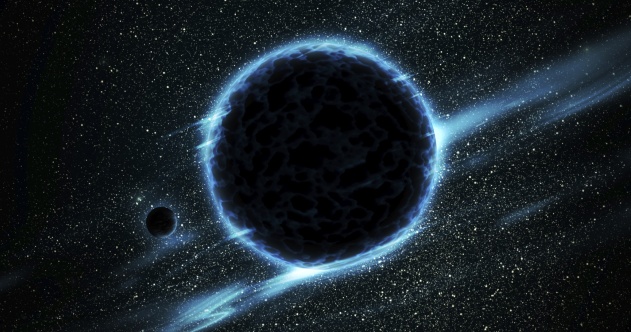
A standard star fuses hydrogen fuel to create helium and supports itself with the outward pressure of this process. However, the hydrogen can’t last forever, and eventually, the star has to burn heavier elements. Unfortunately, the energy released from these heavier elements is not as much as hydrogen, and the star begins to cool. When the star eventually goes supernova, it seeds the universe with the metallic elements that will play a part in forming new stars and planets. As the universe goes forward in time, more and more stars explode. Astrophysicists have shown that as the universe gets older, its overall metal content will increase.
In the past, stars had almost no metal in them, but in the future, stars will have a greatly increased metal content. As the universe ages, new and unusual types of metal stars will form, including the hypothetical frozen star. This type of star was proposed in the 1990s. With an abundance of metal in the universe, newly forming stars would need a much lower temperature to become a main sequence star. The smallest stars, with 0.04 stellar masses (about the mass of Jupiter), could become main sequence by sustaining nuclear fusion at only 0 degrees Celsius (32 °F). They would be frozen and surrounded by clouds of frozen ice. In the far distant future, these frozen stars will replace most regular stars in a cold and dreary universe.
6 Magnetospheric Eternally Collapsing Object
It should come as no surprise that there are many confusing properties and paradoxes involving black holes. In order to deal with the problems inherent in black hole mathematics, theorists have proposed a variety of star-like objects. In 2003, scientists proposed that black holes are not actually singularities, as generally thought, but are an exotic type of star called the magnetospheric eternally collapsing object (MECO). The MECO model is an attempt to deal with the theoretical problem that the matter of a collapsing black hole appears to be traveling faster than the speed of light.
A MECO forms just like a normal black hole. Matter is overcome by gravity and begins to collapse in on itself. However, in a MECO, the radiation produced by colliding subatomic particles creates an outward pressure not unlike the pressure caused by fusion in a star’s core. This allows the MECO to remain relatively stable. It never forms an event horizon and never completely collapses. Black holes eventually collapse in on themselves and evaporate, but a MECO would take an infinite amount of time to collapse. Thus, it enters a state of eternal collapsing.
MECO theories solve many problems of black holes, including the information. Because a MECO never collapses, it does not have the problems of information destruction like a black hole. However exciting MECO theories may be, they have been met with much skepticism in the physics community. Quasars are generally believed to be black holes surrounded by a luminous accretion disk, so astronomers have attempted to find a quasar with the precise magnetic qualities of a MECO. None have been conclusively found, but new telescopes looking for black holes should shed more light on the theory. For now, the MECO is an interesting solution to black hole problems but not a leading candidate.
5 Population III Star
We’ve already talked about frozen stars existing at the end of the universe, when everything has gotten far too metallic for hot stars to form. But what about stars at the other end of the spectrum? These stars, composed of the primordial gas left over from the big bang, are called Population III stars. The star population scheme was devised by Walter Baade in the 1940s and described the metal content of a star. The higher the population, the higher the metal content. For the longest time, there were only two populations of stars (logically named Population I and Population II), but modern astrophysicists have begun serious research into the stars that must have existed right after the big bang.
These stars had no heavier elements in them. They were composed entirely of hydrogen and helium, with possible trace amounts of lithium. Population III stars were absurdly bright and gigantic, bigger than most current stars. Their core not only would fuse normal elements, but also be powered by dark matter annihilation reactions. They were also extremely short-lived, lasting only about two million years. Eventually, these stars burned all of their hydrogen and helium fuel, began to fuse their fuel into heavier metal elements, and exploded, scattering their heavier elements all over the universe. None survived the early universe.
If none survived, why do we even care about them? Astronomers are very interested in Population III stars because they will allow us to gain a better understanding of what happened in the big bang and how the early universe evolved. In this attempt, the speed of light is an astronomer’s friend. Given the constant value of light speed, if astronomers can find extremely distant stars, they are actually looking back in time. A team of astronomers from the Institute of Astrophysics and Space Sciences are trying to look at galaxies farther away from the Earth than ever before attempted. The light from these galaxies would be from only a few million years after the big bang and could contain the light from Population III stars. Studying these stars will allow astronomers to look back in time. Beyond that, studying Population III stars also shows us where we came from. Those early stars are the ones that seeded the universe with the life-giving elements necessary for human existence.
4 Quasi-Star
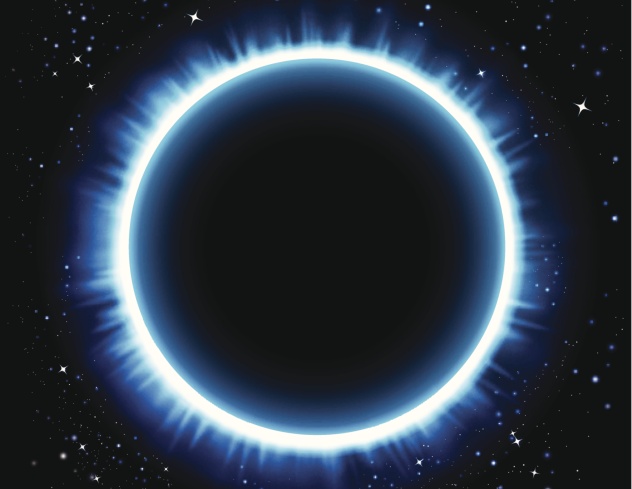
Not to be confused with a quasar (an object that looks like a star but actually isn’t), the quasi-star is a theoretical type of star that could have only existed in the early universe. Like the TZO mentioned above, the quasi-star would have been a cannibal star, but instead of having another star in the middle, it had a black hole. Quasi-stars would have formed from massive Population III stars. When normal stars collapse, they go supernova and leave a black hole. In a quasi-star, the dense outer layer of nuclear material would have absorbed the energy blast from the core collapse and stayed in place without going supernova. The outer shell of the star would remain intact, while the inside formed a black hole.
Like a modern fusion-based star, the quasi-star would reach an equilibrium, although it would have been sustained by more than the energy of fusion. The energy emitted from the black hole core would have provided the outward pressure to resist gravitational collapse. A quasi-star would have been fed by matter falling into the internal black hole and releasing energy. Because of the massive energy release, a quasi-star would have been extremely bright and around 7,000 times more massive than the Sun.
Eventually, however, a quasi-star would lose its external shell after around a million years, leaving only a massive black hole. Astrophysicists have theorized that ancient quasi-stars were the source of the supermassive black holes in the centers of most galaxies, including ours. The Milky Way could have started as one of these exotic and unusual ancient stars.
3 Preon Star

Philosophers through the ages have argued about what is the smallest possible division of matter. With the observation of protons, neutrons, and electrons, scientists thought that they had found the underlying structure of the universe. However, as science marched forward, smaller and smaller particles were found, which have reinvented our conception of our universe. Hypothetically, this could go on forever, but some theorists have proposed the preon as the smallest chunk of nature. A preon is a point particle, having no spatial dimension. Often, physicists will describe particles like an electron as a point particle, but that is just a convenient model. Electrons actually have dimension. Theoretically, a preon doesn’t. They would be the most basic subatomic particle.
Although preon research is not currently in vogue, that hasn’t stopped scientists from discussing what a star made of preons would look like. Preon stars would be extremely tiny, ranging in size somewhere between a pea and a football. Packed in that tiny area would be the mass of the Moon. Preon stars would be light by astronomical standards but much denser than neutron stars, the densest observed object.
These little stars would be extremely hard to see and would only be visible by observing gravitational lensing and gamma ray radiation. Due to their undetectable nature, some theorists have proposed preon stars as candidates for dark matter. However, researchers at particle accelerators focus on Higgs boson particle research instead of looking for preons, so it will be a long time before the existence of the preon is proved or disproved and an even longer time before we find a star made of them.
2 Planck Star
One of the most interesting questions about black holes is what are they like on the inside. Countless movies, books, and papers have been published on this issue, ranging from the fantastical to the highly scientific. There is no consensus in the physics community. Often, the center of a black hole is described as a singularity with infinite density and no spatial dimension, but what does that actually mean? Modern theorists are attempting to get past that vague description and actually find out what is happening in a black hole. Of all the theories, one of the most fascinating is that the center of a black hole actually contains a star called a Planck star.
The motivation behind the Planck star proposal is to resolve the black hole information paradox. If a black hole is considered as just a point singularity, then it has the unfortunate side effect of information being destroyed when entering the black hole, violating conservation laws. However, having a star in the middle of a black hole resolves this problem and helps to deal with problems on the event horizon of a black hole.
As you might guess, a Planck star is a strange beast, although it is supported by normal nuclear fusion. Its name comes from the fact that the star would have an energy density near the Planck density. Energy density is a measure of the energy contained in a region of space, and Planck density is a huge number: 5.15 x 1096 kilograms per cubic meter. That’s a lot of energy. Theoretically, it is how much energy was contained in the universe right after the big bang. Unfortunately, we would never be able to see a Planck star if it was residing inside a black hole, but it poses an interesting idea to solve various astronomical paradoxes.
1 Fuzzball
Physicists love coming up with fun names for complex ideas. “Fuzzball” is the cutest name ever given to a region of deadly space that could murder you instantly. Fuzzball theory comes from the attempt to describe a black hole using the ideas of string theory. As such, a fuzzball is not a true star in the sense that it is not a miasma of incandescent plasma supported by thermonuclear fusion. Rather, it is a region of entangled energy strings supported by their own internal energy.
As mentioned above, a key problem with black holes is figuring out what is inside them. This profound problem is both an observational and theoretical mystery. Standard black hole theories lead to a variety of contradictions. Stephen Hawking showed that black holes evaporate, which implies that any information in them is lost forever. Models of the black hole show that its surface is a high-energy “firewall” that evaporates incoming particles. Most importantly, the theories of quantum mechanics do not work when applied to a black hole singularity.
Fuzzballs address these concerns. To understand what a fuzzball is, imagine that we lived in a two-dimensional world like a piece of paper. If somebody put a cylinder on the paper we would perceive it as a two-dimensional circle, even though the object actually exists in three dimensions. We can imagine that higher dimensional structures exist in our universe; in string theory, these are called branes. If a higher-dimensional brane existed, we would only perceive it with our four-dimensional senses and mathematics. String theorists have proposed that what we call a black hole is actually just our lower-dimensional perception of a higher-dimensional string structure intersecting with our four-dimensional space-time. Thus, a black hole is not really a singularity; it’s just the intersection of our space-time with higher-dimensional strings. This intersection is the fuzzball.
That may seem esoteric, and it is still hotly debated. However, if black holes are actually fuzzballs, it solves many of the paradoxes. It also has slightly different characteristics than black holes. Instead of a one-dimensional singularity, the fuzzball has a definite volume. But although it has a definite volume, it has no precise event horizon, making the edges “fuzzy.” It also allows physicists to describe a black hole using quantum mechanical principles. Plus, “fuzzball” is a really fun name to have in our scientific vernacular.
I am a physics student who likes to write on the side.


